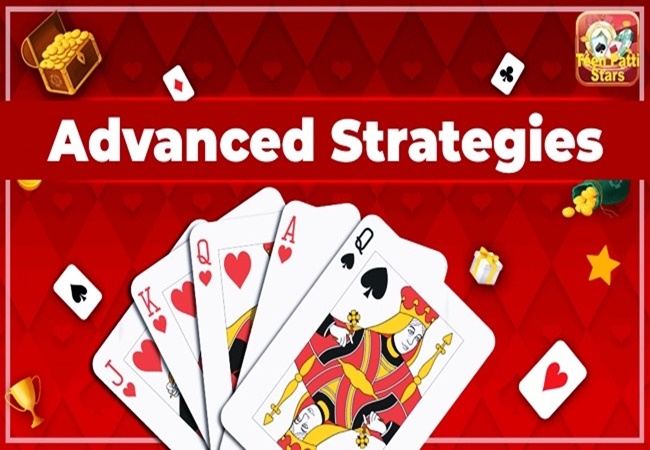How to Manage Bankrolls in Teen Patti and Rummy for Risk Mitigation
Managing your bankroll effectively is one of the most crucial aspects of playing card games like Teen Patti and Rummy, especially when real money is involved in bankroll management. Both games involve a mixture of skill, strategy, and luck, which means there is always a risk of losing money. However, by implementing some solid bankroll management strategies, you can mitigate risks and increase your chances of coming out ahead in the long run. This article will explore various bankroll management techniques that players can apply to Teen Patti and Rummy games to reduce risks and make more informed decisions.

1. Understanding the Concept of Bankroll Management
Bankroll management is the process of budgeting your gambling funds in a way that ensures you don’t lose more than you can afford. This involves setting limits on how much money you are willing to wager in a given period and sticking to those limits. The goal is to reduce the risk of losing your entire bankroll in one session, thereby extending your playing time and increasing your chances of recovering from losses.
In Teen Patti Stars and Rummy, bankroll management becomes even more critical because these games involve multiple rounds of betting. Poor money management can lead to impulsive decisions, which often result in significant losses. By setting appropriate bankroll limits and betting sizes, players can manage their risk effectively while enjoying the game.
2. Setting a Budget
The first step in bankroll management is setting a budget. Determine the amount of money you are willing to allocate specifically for playing Teen Patti and Rummy. This amount should be separate from your daily living expenses and other financial obligations, considering the mathematics in rummy. The key is to only gamble with money you can afford to lose without affecting your lifestyle.
Once you’ve established a budget, break it down into smaller segments to cover multiple gaming sessions. For instance, if you have a total bankroll of ₹10,000, you could divide it into ten sessions of ₹1,000 each. This approach ensures that even if you lose during one session, you still have enough funds to play in future sessions. It helps to keep you disciplined and prevents you from chasing losses.
3. Using the Unit System for Betting
One effective strategy for managing your bankroll is to use the unit system for betting. In this system, your bankroll is divided into smaller units, and each bet is made in terms of these units. For example, if you have a bankroll of ₹5,000, you could divide it into 100 units of ₹50 each. The unit size depends on your overall bankroll and your risk tolerance.
The unit system helps in standardizing the amount you bet on each round, which can prevent you from placing overly large bets when you’re on a winning streak or small bets when you’re losing. For games like Teen Patti and Rummy, where stakes can increase quickly, using the unit system keeps your bets consistent and aligned with your overall bankroll, allowing for effective bluffing strategies.
4. Applying the 5% Rule
Another practical approach for bankroll management is applying the 5% rule, which states that you should never wager more than 5% of your total bankroll on a single bet or game. This rule helps to ensure that you won’t lose a significant portion of your bankroll in one go, providing a cushion against streaks of bad luck.
In Teen Patti and Rummy, adhering to the 5% rule may mean that you will need to adjust your bet sizes based on your current bankroll. For example, if your total bankroll is ₹10,000, your maximum bet should not exceed ₹500. If you experience a loss, adjust your future bets to reflect the new bankroll amount (5% of ₹9,500, for example). This adaptive approach helps to preserve your bankroll over multiple gaming sessions.
5. Tracking Your Wins and Losses
Keeping a record of your wins and losses is crucial for effective bankroll management. By tracking your performance, you can identify patterns in your gameplay and make data-driven decisions to adjust your strategies. For instance, if you notice that you consistently lose when playing Teen Patti with high-stakes bets, you might consider reducing your betting size or focusing on a different strategy.
Moreover, tracking your results can help you set realistic profit targets and loss limits. If your goal is to win ₹2,000 in a session, you can decide to stop playing once you reach that target, regardless of how well you are doing. Similarly, setting a loss limit (such as 30% of your starting bankroll) will prevent you from continuing to play in the hope of recovering your losses, which often leads to chasing losses.
6. Managing Emotions
Emotional management is an often-overlooked aspect of bankroll management in Teen Patti and Rummy, as it can greatly influence your ability to read opponents’ behavior. Players tend to make irrational decisions when they are emotionally charged—either due to a winning streak that makes them overconfident or a losing streak that causes them to panic. In either case, emotions can cloud judgment, leading to poor decision-making.
One effective way to manage emotions is to establish a “cooling-off” period whenever you experience a significant win or loss. For instance, if you win more than 20% of your bankroll in a session, take a break before playing again. Similarly, if you lose a set percentage, walk away for a few hours or even a day. This break allows you to reset your emotions and come back to the game with a clear mind.
7. Adjusting Strategies for Different Game Formats
Teen Patti and Rummy come in various formats, including cash games and tournaments. Each format requires a different approach to bankroll management. In cash games, you can leave the table at any time, so it’s easier to manage your bankroll according to your current situation. For example, if you are winning, you can choose to stop playing and lock in your profits.
Tournaments, on the other hand, often have fixed buy-ins and blind structures, making it essential to adjust your strategy based on the tournament’s rules and incorporate long-term strategies. In this scenario, you should allocate a separate portion of your bankroll exclusively for tournament play and treat each buy-in as a one-time investment. This way, you won’t dip into your cash game bankroll for tournament entries and vice versa.

8. Knowing When to Walk Away
Knowing when to walk away is a critical aspect of bankroll management. Sometimes, players get caught in the heat of the moment and keep playing despite repeated losses, believing they can turn the tide. This mindset often leads to chasing losses, which can rapidly deplete a bankroll.
Set clear criteria for walking away. This could be a pre-determined time limit, a set loss percentage (such as 30% of your session’s bankroll), or a profit target. Sticking to these criteria ensures that you leave the game before things get out of hand, allowing you to protect your bankroll for future sessions.
9. Using Bonuses and Promotions Wisely
Many online platforms offer bonuses and promotions for playing Teen Patti and Rummy. While these can boost your bankroll, it’s essential to use them wisely. Bonuses often come with specific wagering requirements, meaning you need to bet a certain amount before you can withdraw your winnings.
If you decide to use bonuses, treat them as an extension of your bankroll and continue to follow your established bankroll management rules. Do not increase your bet sizes simply because you have a larger bankroll due to bonuses, as this can lead to losses when the bonus runs out.
10. Regularly Reviewing Your Bankroll Management Plan
Lastly, it is important to regularly review and adjust your bankroll management plan. As you gain more experience in Teen Patti and Rummy, your understanding of the game and risk tolerance may change. Periodic reviews allow you to adjust your budget, betting sizes, and other strategies to align with your evolving playing style and financial goals.
Bankroll management is not a one-size-fits-all strategy; it requires continuous monitoring and adjustment. By implementing these strategies, you can mitigate risks and enjoy the excitement of Teen Patti and Rummy while minimizing potential losses.








